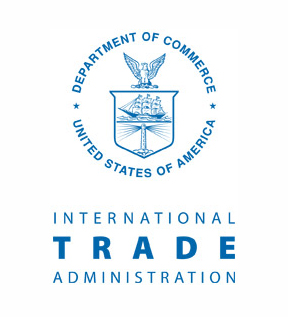December 5, 2016 – Not only an important trading partner, China is a critically important travel and tourism market for the United States. It plays an enormous role in our ability to reach the U.S. Department of Commerce’s National Travel and Tourism Strategy’s goal of welcoming 100 million international visitors annually to the United States by 2021.
Travel from China to the United States continues to show double-digit growth, with 2.6 million Chinese travelers visiting the United States in 2015 – an 18 percent growth over the previous year. Last year, these visitors spent a record $30.1 billion experiencing the United States, positioning China as the United States’ top spending market abroad in terms of travel and tourism exports.
According to the October 2016 National Travel and Tourism Office Forecast for International Travelers, more than 5 million Chinese travelers are expected to visit the United States by 2021 – which would make China the top overseas visitation market.
Recognizing the importance of travel and tourism between the two nations, President Obama and President Xi proclaimed 2016 as the U.S.-China Tourism Year (Tourism Year). The Tourism Year was initiated as an opportunity for both countries to review policies, processes and product offerings to ensure that Chinese visitors to the United States are met with an enjoyable travel experience.
Last week, U.S. Secretary of Commerce Penny Pritzker gave remarks at the U.S.-China Tourism Year closing event. “The Tourism Year was initiated as an opportunity for our countries to take a look at our policies, processes and product offerings to ensure that we can provide Chinese visitors with an enjoyable travel experience,” Pritzker explained
To make the United States a more welcoming destination for Chinese visitors, U.S. Travel and Tourism industry leaders used the Tourism Year to encourage the industry to become “prepared for China.”
The Department of Commerce had three overarching goals for the Tourism Year:
- To provide outreach to the entire nation about the importance of being prepared for Chinese visitors in order to be a competitive destination;
- To successfully execute a small number of “signature events;” and
- To work closely with industry and across the federal government to encourage efforts to create an enjoyable experience for Chinese visitors from beginning to end.
Signature events completed during the year included the February opening event hosted by Brand USA in Beijing; the 1,000 U.S. visitors to the Great Wall event in March; the China-U.S. Tourism Leadership Summit in September, held in Ningxia; and the closing event held in Washington, D.C. in November.
Here are just a couple of the achievements during this year:
- Federal agencies developed new travel itineraries for destinations and activities that speak directly to Chinese interests, including thematic itineraries such as national parks and the great outdoors.
- Commercial Service produced a China Travel Resource Guide for use by the U.S. travel and tourism industry interested in Chinese visitation.
- The National Park Service is ensuring that Chinese visitors have access to in-language materials and web information at the most visited National Parks.
- The State Department maintained progress on visa processing and kept wait times down to less than five days, despite the more than 50 percent increase in applications since the extension of visa validity.
Commerce will continue to work with industry to determine how the government can assist with market access issues in China, and we will continue to push for policy issues to be resolved, including: 1) ensuring there are ample air services to cater to the increasing demand for Chinese travel to the United States; 2) working to open the sale of outbound travel in China to U.S. companies; and 3) ensuring the ability of foreign global distribution services platforms to operate in China.
As our two populations more clearly understand the ties that bind our nations, this will create a multiplier effect for governmental and business ties, and maximize the potential of the most consequential relationship in the world. Deepening those people-to-people ties fundamentally requires travel and tourism, which is why the Tourism Year was so critical.
For more information on the United States Top 10 International Markets, please click here: http://travel.trade.gov/pdf/2015-Top-10-Markets.pdf
If you are interested in learning more about travelers from China to the United States, please use this link:http://travel.trade.gov/outreachpages/download_data_table/2015_China_Market_Profile.pdf


